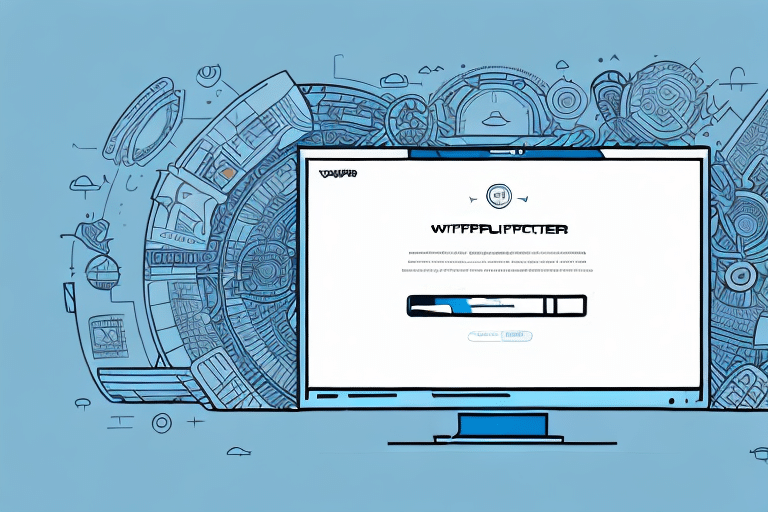Navigating the In-Transit Process with UPS
Effective in-transit shipping is crucial for businesses and individuals looking to move goods reliably and efficiently. UPS, a trusted name in logistics, offers comprehensive solutions to meet diverse shipping needs. This article provides an in-depth analysis of UPS's in-transit process, highlighting its benefits, best practices, and strategies to optimize your shipping experience.
Understanding UPS's In-Transit Process
When you ship with UPS, each package undergoes a meticulously managed in-transit process, ensuring timely and secure delivery from pickup to destination. This process involves several key stages:
- Pickup: The journey begins with package collection from the shipper's location.
- Sorting: Packages are sorted at UPS facilities based on their destination and shipping method.
- Transportation: Depending on the service chosen, packages are transported via ground vehicles, air freight, or international shipping lanes.
- Delivery: Final delivery is made to the recipient, with options for signature confirmation and secure drop-off.
UPS utilizes advanced tracking technology to provide real-time updates at each checkpoint, allowing shippers to monitor their packages throughout the transit journey.
Benefits of Using UPS for In-Transit Shipments
Choosing UPS for your shipping needs offers several advantages:
- Reliability: UPS's extensive global network ensures consistent and timely deliveries.
- Cost-Effectiveness: Various shipping options allow you to balance cost and speed based on your requirements.
- Comprehensive Tracking: Detailed tracking information provides transparency and control over your shipments.
- Customizable Services: From insurance to specialized handling, UPS offers tailored solutions to meet specific shipping needs.
- Sustainability: UPS is committed to reducing its environmental impact through initiatives like alternative fuel vehicles and optimized delivery routes.
According to UPS's 2023 sustainability report, the company has reduced its carbon emissions by 15% over the past five years, underscoring its dedication to eco-friendly practices.
Preparing Your Package for Shipping with UPS
Proper packaging is essential to ensure your shipment arrives intact and on time. Follow these best practices when preparing your package:
Choose the Right Packaging Materials
- Use sturdy, durable boxes appropriate for the size and weight of your items.
- Select appropriate cushioning materials like bubble wrap or foam peanuts to protect contents.
- Ensure all packages are securely sealed with high-quality packing tape.
Labeling and Documentation
- Clearly label your package with accurate shipping and return addresses.
- Include all necessary customs documents for international shipments to avoid delays.
- Use tamper-evident materials if security is a concern.
Compliance with Regulations
Ensure that your package complies with UPS's guidelines and any relevant shipping regulations, especially when sending hazardous or fragile items.
Tracking Your Package with UPS
UPS offers robust tracking tools to monitor your shipment's progress:
- Online Tracking: Access real-time tracking information via the UPS website or mobile app.
- Notifications: Receive updates through email or SMS alerts about your package's status.
- Detailed Reports: View comprehensive details, including timestamps and location scans, for each transit point.
These tracking features enhance transparency and allow you to manage your shipments proactively. For more information, visit the UPS Tracking Services page.
Handling Delays and Issues
Despite UPS's efficiency, delays can occasionally occur. Common causes include:
- Weather Conditions: Severe weather can disrupt transportation schedules.
- Customs Clearance: International shipments may experience delays during customs inspections.
- High Shipping Volumes: Peak seasons like holidays can lead to increased transit times.
To mitigate the impact of delays:
- Regularly monitor your shipment's status through UPS tracking tools.
- Communicate promptly with UPS customer service for updates and assistance.
- Consider using UPS's expedited shipping options during peak times to ensure timely delivery.
Optimizing Shipping Costs with UPS
Managing shipping costs is critical for both businesses and individuals. UPS provides several options to help optimize expenses:
Discount Programs
- Volume Discounts: Regular shippers can benefit from reduced rates based on shipping volume.
- Contracted Rates: Businesses can negotiate customized rates tailored to their specific shipping needs.
Shipping Strategies
- Consolidate shipments to take advantage of bulk shipping rates.
- Choose the appropriate shipping service level to balance cost and delivery speed.
- Utilize UPS's Rate Calculator to estimate and compare shipping costs.
By leveraging these strategies, you can achieve significant cost savings while maintaining reliable shipping services.
Best Practices for International Shipping
International in-transit shipping with UPS involves additional considerations:
Understand Customs Requirements
- Research the destination country's import regulations and prohibited items.
- Ensure all necessary customs documentation is accurately completed.
Choose the Right Shipping Service
- Select services like UPS Worldwide Express for faster delivery or UPS Worldwide Saver for a balance of speed and cost.
- Factor in additional transit time for customs processing.
Insurance and Protection
Consider purchasing additional insurance to protect against loss or damage during international transit. UPS offers various insurance options to suit different needs.
For detailed information on international shipping requirements, visit the UPS International Services page.
Handling Insurance Claims for Lost or Damaged Packages
Despite best efforts, packages can sometimes be lost or damaged during transit. UPS provides robust insurance options to safeguard your shipments:
Purchasing Insurance
- Select appropriate insurance coverage based on the value and nature of your shipment.
- Understand the terms and coverage limits associated with your chosen insurance plan.
Filing a Claim
- Access the UPS Claims Portal to initiate a claim.
- Submit required documentation, including proof of value and evidence of damage or loss.
- File claims within the specified timeframe, typically within 60 days of the shipment date.
For assistance with claims, contact UPS Customer Service.
Making Changes to Your Shipment During Transit
Circumstances may arise that require modifications to your shipment after it has been dispatched. UPS provides several options to accommodate such changes:
- Change of Address: Update the delivery address using UPS's Change of Address feature.
- Delivery Instructions: Modify delivery details, such as requesting a hold at a UPS location, through the UPS website or customer service.
- Rescheduling Deliveries: Adjust the delivery date to better suit recipient availability.
Be aware that some changes may incur additional fees. Review the associated costs and policies on the UPS Help Center.
Conclusion
Navigating the in-transit process with UPS can significantly enhance your shipping efficiency and reliability. By understanding UPS's comprehensive logistics network, leveraging their tracking and insurance options, and adhering to best practices for packaging and international shipping, you can ensure your packages reach their destinations safely and on time. Whether you're a business looking to optimize your supply chain or an individual sending personal items, UPS offers the tools and support needed for successful in-transit shipping.






















